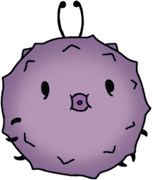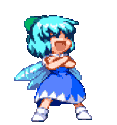|
gradenko_2000, I think you've got the basic idea of how to do it correct. But the length combat should last is really subjective. If your group really loves combat then clearly your "should" is going to be longer than a group that doesn't care for it, and vice versa. However, there are a couple of other things to keep in mind that I don't think have been brought up yet. You'll want to gauge the length of fights based on the amount of interesting player, monster, terrain, and situational options available. It sucks when fights devolve into the DM and players trading "I hit for 16, I miss, I miss, I hit for 7" ad nauseum, even if its wrapped up in a lot of prose. You also want to look at roughly how much damage the monsters can expect to do (once again based on expected PC values) and try to find the sweet spot of fights that cost resources but don't statistically lead to TPKs. Finally, you want to look at how many of that type of monster you expect to throw at the PCs in a fight. My personal preference across a few different genres and in both table top and video game settings seems to be more weaker enemies over fewer stronger enemies and boss/solo enemies that get ways to subvert the action economy and have resistances and immunities to the nastier status effects.
|
|
|
|

|
| # ? May 24, 2024 23:30 |
|
Really Pants posted:There doesn't seem to be any benefit to this. What am I missing? I think the idea is that it essentially gives you advantage on the attack roll in exchange for lower damage. It makes individual attacks less of an "all or nothing" deal.
|
|
|
|
Maybe I've been playing too many video games but the whole COMBAT ABSTRACTION thing makes me roll my eyes. It's a desperate attempt to explain why the existence of game elements in RPGs doesn't mean it's not a simulation (it's not) and taken to its logical conclusion it kills any possible combat narrative because you didn't score a hit on that guy you gained a slight positional advantage that made him more tired.
|
|
|
|
In Wushu you can have a perfectly fine combat narrative, even though it does go precisely to the logical conclusion.
|
|
|
|
As opposed to the combat narrative of 'I stabbed him six times, and he's still up and fine.' which is always thrilling.
|
|
|
|
Looking on the WoTC forums (I know) for anything about Dungeonscape and found this:quote:...it looks like WotC expects products to be delivered on deadline, not unreasonable, and when they are not after several failed deadlines they must make the decision to part ways. This is smart and good for WotC. Mike is apparently doing an AMA on reddit in a few days, so it'll be interesting to see if he reveals anything about the relationship breakdown or any replacement toolsets.
|
|
|
|
Night10194 posted:As opposed to the combat narrative of 'I stabbed him six times, and he's still up and fine.' which is always thrilling. There's a lot of cool ways to hit people. There's not a lot you can do when a dice roll is actually determining the specific way you miss people. Because I guess there's good types of misses and bad types of misses. Only some types of dodging actually tire people out, I guess. The way the rules actually work doesn't really line up to that specific interpretation of events. If hits are actually situations when someone dodged except in a way that tired them out, wouldn't dexterity contribute to hit points instead of AC? Why do larger weapons do more damage? You'd think smaller, faster weapons would require more energy to dodge so they'd do more damage. Why was subdual damage ever a thing? Everything in the entire ruleset lines up to a video game RPG rock 'em sock 'em robots version of events except that of course that can't be right because how can you be stabbed and live? Here's a question: if you get stabbed and KO'd you can bleed out, but you can also get back up and be totally fine again in less than 30 seconds. So wouldn't the near-death rules have to substantially change for this interpretation of events to make any sense?
|
|
|
|
What I was trying to suggest (a bit too flippantly) is more that the rules are already insanely divorced from reality. For some groups, 'near misses' and such are going to work. For others, they'll describe their characters taking glancing wounds and things. Others will describe every hit as a bloody wound. The point is that the 'narrative' is already divorced from the combat mechanics, so changing the mechanics/increasing abstraction shouldn't necessarily change how you describe hits. Hell, even for the 'every hit is solid' camp, how many movies and stories have you seen where a character takes a serious, bloody, obvious hit, but because it's dramatically appropriate they kinda sway for a second then grit their teeth real hard and get back on their feet? Then later get the most cursory treatment and the bandage and bit of blood just becomes part of their costuming? The rules already have very little effect on combat narrative because they're already abstract and unrealistic, was what I intended to say, and thus simplifying them without really changing the basic spirit of damage vs. HP doesn't really affect anything. What would actually affect combat narrative would be, say, introducing a system like the Vit/Wounds split from Spycraft and Star Wars, where only Crits are explictly direct, serious hits, or adding in something like Warhammer's Critical Damage where when your HP runs out you start losing limbs, etc. Abstracting out how a ridiculously abstract system works a little further without changing the fundamental mechanics won't suddenly make the narrative boring.
|
|
|
|
That's why I stick to an ultra-simulationist battle narrative style, as exhibited in Yu-Gi-Oh and other classics of Asian cinema
|
|
|
|
Jimmeeee posted:I think the idea is that it essentially gives you advantage on the attack roll in exchange for lower damage. It makes individual attacks less of an "all or nothing" deal. That, and also you can split your damage between two creatures if both are weak. But the auto-damage idea from the 4E monk sounds like a good one.
|
|
|
|
The fact that armour and dexterity contribute to AC in the exact same way is also really niggling to me. This is why people got in such a tiff about the 'damage on a miss' thing because when you miss someone you miss, obviously, and never do attacks glance off armour (it's not like your fighter's armour is the biggest determinant of her AC or anything). So damage on a miss means you make someone bleed without touching them! Nobody wants to say that it's because your great weapon swings hit so hard that they bang people around in their armour regardless, because that would require people to think about how AC and armour in general actually works in their precious D&D simulation or whatever. AC is poo poo vvv: nope Boing fucked around with this message at 00:40 on Oct 31, 2014 |
|
|
|
Boing posted:The fact that armour and dexterity contribute to AC in the exact same way is also really niggling to me. This is why people got in such a tiff about the 'damage on a miss' thing because when you miss someone you miss, obviously, and never do attacks glance off armour (it's not like your fighter's armour is the biggest determinant of her AC or anything). So damage on a miss means you make someone bleed without touching them! Nobody wants to say that it's because your great weapon swings hit so hard that they bang people around in their armour regardless, because that would require people to think about how AC and armour in general actually works in their precious D&D simulation or whatever. AC is poo poo Bring back touch AC! Wait in 5E did they bring back touch AC?
|
|
|
|
30.5 Days posted:Wait in 5E did they bring back touch AC? No. Some spells do use attack rolls though, but they just use your normal AC just like everything else.
|
|
|
|
Reminder that HP was explicitly used out of inspiration of this fight. See how nobody actually gets hurt until that last final blow? Note how HP in D&D gives no penalties or indications of wounds at any point in time?
|
|
|
|
That fight is really cool and the way it works in D&D is you have 2 characters with high dex AC missing each other for 20 rounds until one of them lands a crit. I can't think of a more boring gameplay experience
|
|
|
|
Boing posted:That fight is really cool and the way it works in D&D is you have 2 characters with high dex AC missing each other for 20 rounds until one of them lands a crit. I can't think of a more boring gameplay experience ...or in OD&D through 2e, Robin lands a crit at the start of round 3. Or since hit points are not literally wounds regardless of which AD&D you're playing*, you could see the various knockdowns, grapples, leaping aside, and near-misses as "reduced HP". Page 196 of the 5e PHB "Hit points represent a combination of physical and mental durability, the will to live, and luck." *edit: Except maybe 3.5? I can't remember what the text there does. Elector_Nerdlingen fucked around with this message at 01:51 on Oct 31, 2014 |
|
|
|
Boing posted:That fight is really cool and the way it works in D&D is you have 2 characters with high dex AC missing each other for 20 rounds until one of them lands a crit. I can't think of a more boring gameplay experience I can see how you would come to that conclusion if you were completely illiterate.
|
|
|
|
The glossary of the 3.0 PHB says hit points are "A measure of character health or object integrity", and the combat chapter says "Your hit points tell you how much punishment you can take before dropping," so it might be a key source of "HP is meat" idea.
|
|
|
|
The key source of "HP is meat" is that nerds get a single idea of how a fight has to work in their heads and cannot divorce away from it even when the mechanics actively work against it. It didn't start in 3e, it started probably the day some people first played D&D. There's a reason Gygax railed against "realism" in his own writing. That fight wasn't one with crits or misses or whatever. The two fighters were readily doing HP damage to each other with each parry. HP is a binary. You're either Alive or Dead. The point of HP was to allow fights where two fighters COULD attack back and forth until one dies rather then it being over in a single hit. The only point of HP that matters is the last.
|
|
|
|
Furthermore, a high degree of combat abstraction goes all the way back to OD&D. And if I remember right, the AC system was adapted from a naval warfare game. Basic D&D makes no bones about this. In every version of Basic, HP are defined as "how much damage you can take" and damage is defined as "a thing that reduces your HP."
|
|
|
|
jigokuman posted:The glossary of the 3.0 PHB says hit points are "A measure of character health or object integrity", and the combat chapter says "Your hit points tell you how much punishment you can take before dropping," so it might be a key source of "HP is meat" idea. Right, so 5e says: "Hit points represent a combination of physical and mental durability, the will to live, and luck." (PHB page 196) 4e says: "Hit points measure your ability to stand up to punishment, turn deadly strikes into glancing blows, and stay on your feet throughout a battle. Hit points represent more than your character's physical endurance. They represent your character's skill, luck, and resolve - all the factors that help you stay alive in a combat situation." (PHB page 293) 3e says: "Your hit points tell you how much punishment you can take before dropping" (PHB page 136) 2e says: "To allow characters to be heroic (and for ease of play), damage is handled abstractly in the AD&D game. All characters and monsters have a number of hit points. The more hit points a creature has, the harder it is to defeat" (DMG page 72, PHB page 103, same quote) 1e says: "It is quite unreasonable to assume that as a character gains levels of ability in his or her class that a corresponding gain in actual ability to sustain physical damage takes place. It is preposterous to state such an assumption, for if we are to assume that a man is killed by a sword thrust which does 4 points of damage, we must similarly assume that a hero could, on the average, withstand five such thrusts before being slain! Why then the increase in hit points? Because these reflect both the actual physical ability of the character to withstand damage - as indicated by constitution bonuses - and a commensurate increase is such areas as skill in combat and similar life-or-death situations, the "sixth sense" which warns the individual of some otherwise unforseen events, sheer luck, and the fantastic provisions of magical protection and/or divine protection...." (DMG page 82) and it goes on for another 4 or 5 paragraphs. One of these things is not like the others. e: Halloween Jack posted:Furthermore, a high degree of combat abstraction goes all the way back to OD&D. And if I remember right, the AC system was adapted from a naval warfare game. Yep AC's adapted from a battleship game, and that's why AC descended too - because 1 in that game mean "first class", not "the lowest possible number". Basic (and 3e) definitely define HP as "damage you can take", but the damage is still abstracted - HP only defines <dead y/n>, not how injured you are. Elector_Nerdlingen fucked around with this message at 04:32 on Oct 31, 2014 |
|
|
|
wallawallawingwang posted:gradenko_2000, I think you've got the basic idea of how to do it correct. But the length combat should last is really subjective. If your group really loves combat then clearly your "should" is going to be longer than a group that doesn't care for it, and vice versa. However, there are a couple of other things to keep in mind that I don't think have been brought up yet. You'll want to gauge the length of fights based on the amount of interesting player, monster, terrain, and situational options available. It sucks when fights devolve into the DM and players trading "I hit for 16, I miss, I miss, I hit for 7" ad nauseum, even if its wrapped up in a lot of prose. You also want to look at roughly how much damage the monsters can expect to do (once again based on expected PC values) and try to find the sweet spot of fights that cost resources but don't statistically lead to TPKs. Finally, you want to look at how many of that type of monster you expect to throw at the PCs in a fight. My personal preference across a few different genres and in both table top and video game settings seems to be more weaker enemies over fewer stronger enemies and boss/solo enemies that get ways to subvert the action economy and have resistances and immunities to the nastier status effects. Thanks for the insight - and yeah, I was sort of expecting there's going to be an element of "DM fiat" in this no matter what. Monster damage towards players is the next thing I was thinking about. Wasn't it supposed to be something like an average fight being able to use up a quarter of the party's resources leading up to about 4 per "adventuring day"?
|
|
|
|
gradenko_2000 posted:Monster damage towards players is the next thing I was thinking about. Wasn't it supposed to be something like an average fight being able to use up a quarter of the party's resources leading up to about 4 per "adventuring day"? Next says 6-8 medium to hard fights per adventuring day. Presumably a "medium" fight is meant to be the average encounter and the text means "6 (hard) to 8 (medium) fights per day", so it's probably meant to be more like an eighth of their resources per fight.
|
|
|
|
Huh. Okay. Subdividing it that finely when a Fighter's got ~13 HP at level 1 and a caster has 4 spells is going to be a thing.
|
|
|
|
If you're reworking monsters, you're going to have to rework the encounter building stuff anyway. 6-8 medium-hard is a pretty drat big range when you look at what that could actually mean. e: I realise you're not actually reworking monsters, just trying to find a way to build them consistently. There's been a lot of discussion already about how/why the encounter-building stuff is weird, so it's probably not a good idea to work back from it to get what you're after. Elector_Nerdlingen fucked around with this message at 06:58 on Oct 31, 2014 |
|
|
|
ProfessorCirno posted:Note how HP in D&D gives no penalties or indications of wounds at any point in time? So if a character is KO'd and have a % chance of bleeding out and dying, but they get up and absolutely nothing is wrong with them.... what happened exactly? The reason why HP in D&D gives no penalties or indication of wounds is that IT'S A GAME. The reason you get more of them as you level up is IT'S A GAME. The reason why you can get up after receiving a wound that nearly killed you is IT'S A GAME. The reason why anything is the way it is is IT'S A GAME. Specifically it is the kind of game where these things happen. It's not a simulation and isn't trying to be so nothing makes a whole lot of sense if you look too closely at it. EDIT: Like I don't know how to tell you this, but that fight didn't inspire HP. The need to have a fantasy wargame in which you play with only a single figure inspired HP. 30.5 Days fucked around with this message at 09:14 on Oct 31, 2014 |
|
|
|
5e's rules say that when you're reduced to zero hit points or fewer, you either die or fall unconscious (like 4e, there's nothing there about "bleeding out"). From that reading, you might not even have a wound. You might have just been KO'd in true hero style where everything's fine 10 seconds later. If you do have a wound, I guess you slap a bandage over it and continue being a hero, just like most other pulp fantasy heroes do. Maybe you can wince and make a wry comment later on when someone changes the bandage, but only as a way of showing that you were actually hurt in spite of the lack of other effects.
|
|
|
|
30.5 Days posted:So if a character is KO'd and have a % chance of bleeding out and dying, but they get up and absolutely nothing is wrong with them.... what happened exactly? The reason why HP in D&D gives no penalties or indication of wounds is that IT'S A GAME. The reason you get more of them as you level up is IT'S A GAME. The reason why you can get up after receiving a wound that nearly killed you is IT'S A GAME. The reason why anything is the way it is is IT'S A GAME. You're quoting later editions to the game. OD&D didn't have bleeding out or a percentile chance. You hit zero HP? You're dead. Literally one of the original developers and players of OD&D have quoted that exact fight scene multiple times and gone "Gary loved this and wanted this to happen." I don't know how to tell you this but you're factually incorrect abut basically all of that.
|
|
|
|
AlphaDog posted:If you're reworking monsters, you're going to have to rework the encounter building stuff anyway. You're probably right, thanks for the advice.
|
|
|
|
If I could be bothered doing what you're doing (which I can't, trying to make sense out of the existing monsters was bad enough), I would go about it like this: 0: What are you using as your standard for "average party"? (Probably 4 PCs? What classes? Assume a base level of charop?) 1: How many average fights in a day? (e: that is, how many can the party be expected to actually fight rather than bypassing without expending resources) 2: What should an easy / average / hard / stupid fight "cost" the average party? 3: Fit monster stats and abilities to 2. 4: Fit monster CR/XP/whatever to 2. Elector_Nerdlingen fucked around with this message at 09:47 on Oct 31, 2014 |
|
|
|
ProfessorCirno posted:I can see how you would come to that conclusion if you were completely illiterate. I'm talking about how people seem to actually play D&D, rather than how HPs are supposed to work in a reasonable HP system
|
|
|
|
In the back of my mind I know that HP/damage (and, for that matter, "hits" and "attacks") are supposed to be an abstraction, but when I'm narrating I still fall back to statements like "Yeah! That was a solid hit", "Ouch, that hurt" and "oh he's hurting now!" Bloodied as the 4E adjective is also such a handy descriptor that I find myself using it all the time. AlphaDog posted:If I could be bothered doing what you're doing (which I can't, trying to make sense out of the existing monsters was bad enough), I would go about it like this: Right, I was thinking about the same lines. To be honest I don't really game enough that this will probably come into play anytime soon, but it's an interesting mental/design exercise. As far as average party, I was thinking to just tailor it to the actual party I was playing with, or perhaps to average out DPR potential of martial classes and work from there. I'm really not familiar enough with caster classes yet - probably something I should look at too.
|
|
|
|
In cases of stuff like the necromancer summoned minions (specifically the crumbling skeletons with their resist 16+) how do you handle circumstantial bonuses? The skeletons in this case resist all weapon attacks. Do you just go with any attacks vs AC, any attacks PERIOD, non-elemental damage, or does it have to actually be a physical attack?
|
|
|
|
ProfessorCirno posted:In cases of stuff like the necromancer summoned minions (specifically the crumbling skeletons with their resist 16+) how do you handle circumstantial bonuses? The skeletons in this case resist all weapon attacks. Do you just go with any attacks vs AC, any attacks PERIOD, non-elemental damage, or does it have to actually be a physical attack? What screws the fighter over the most without effecting the glorious casters? It's that one.
|
|
|
|
The actual answer is "I posted that in the wrong thread"
|
|
|
|
It kinda cool news The Oathbreaker Paladin and Death Domain Cleric preview has been released. http://ow.ly/i/7qc7s/original While rather cool I think these should have just been in the Players Handbook.
|
|
|
|
If they did that the players would feel entitled to play villainous characters. It is the same reason prestige classes were in the 3e DMG.
|
|
|
|
"A player can choose one of these options with the your approval". Quality writing right there.
|
|
|
|
Babylon Astronaut posted:If they did that the players would feel entitled to play villainous characters. It is the same reason prestige classes were in the 3e DMG. Yeah but The Necromancy Wizard School is no worse then the Death Domain. AlphaDog posted:"A player can choose one of these options with the your approval". Guessing it was originally going to be with the DM's approval. Then they realized that the DM is the one who should be reading the book and wanted to change it to your approval, but forgot to get rid of the "The" MonsterEnvy fucked around with this message at 01:03 on Nov 1, 2014 |
|
|
|

|
| # ? May 24, 2024 23:30 |
|
I would never have figured that out.
|
|
|






















